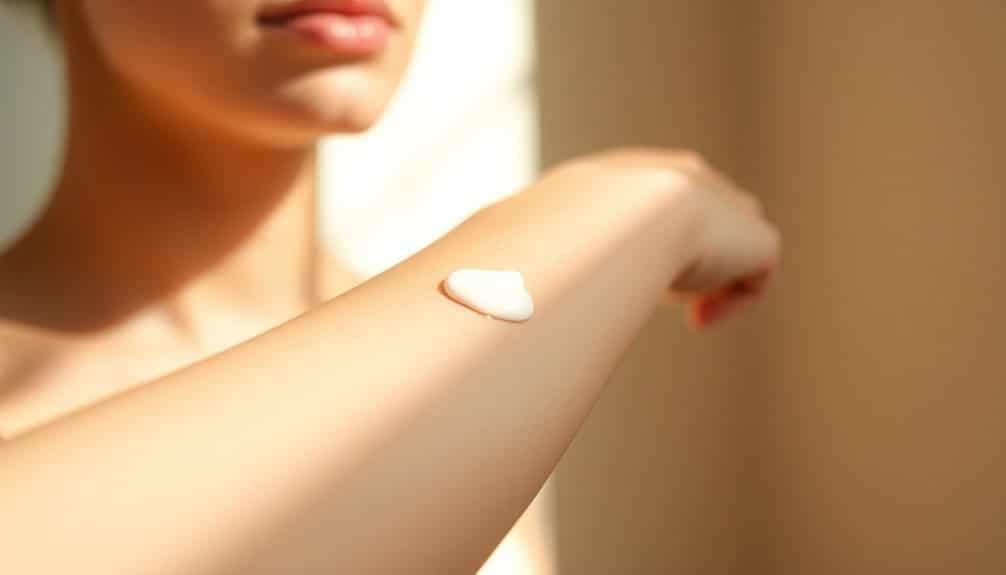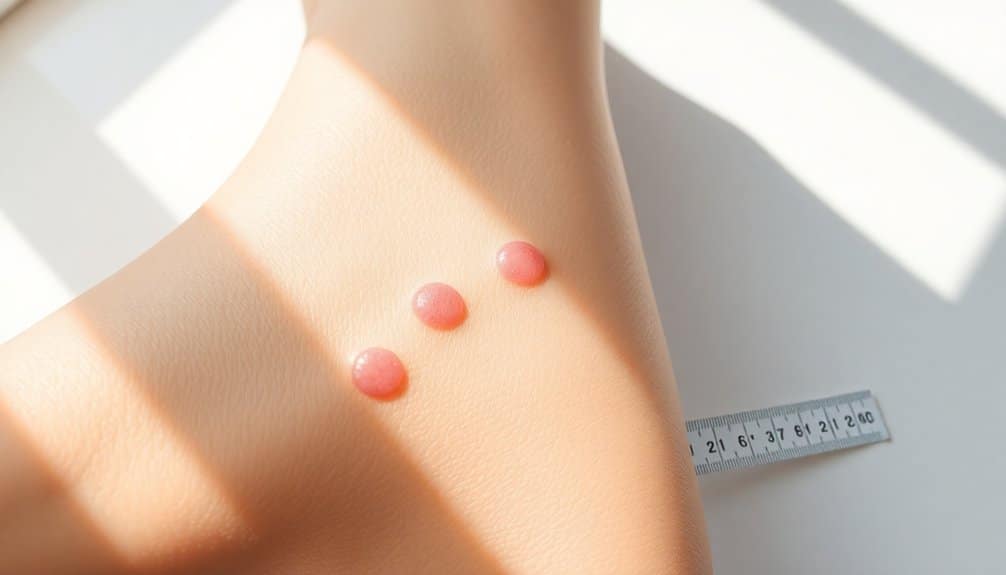Ah, the moment we decide to embrace a new skincare product can stir a mix of excitement and trepidation. Many have experienced the discomfort of skin that reacts poorly to unfamiliar ingredients. That tingling burn and redness could have been easily sidestepped with the habit of performing a patch test—a ritual that unfolds quickly but can save you from prolonged discomfort.
Too often, people overlook this essential step, believing it to be tedious or not quite warranted. Yet, it is this very practice that countless skincare experts advocate, a foundation for ensuring that our delicate skin remains harmonious and balanced.
When introducing a new face cream or serum, take a moment to apply a small amount to an inconspicuous area, such as behind the ear or on the inner arm. Leave it for at least 24 hours and observe how your skin responds. Should you notice any irritation, you can swiftly avert further complications. Validation lies in this simple yet profound method, showing respect for your skin’s unique nature.
In the art of beauty care passed down through generations, patience and caution hold immense value. Embracing the ritual of patch testing not only demonstrates mindfulness but also honors the tradition of caring for one’s skin—an act as rich and nuanced as the art of applying *uguisu no fun*.
Through this practice, we cultivate a deeper understanding of our skin, allowing us to select products that truly enhance our beauty while minimizing risk.
Table of Contents
Toggle
Before embracing that appealing new face cream, take a moment for a patch test. This crucial step allows you to evaluate whether the product will harmonize with your skin or lead to discomfort.
Think of the patch test as a preliminary assessment for your skin. By applying a tiny amount of the new product to a discreet area, such as the inside of your arm or the bend of your elbow, you can identify any potential irritants before they affect your entire complexion. It’s akin to sampling a delicately crafted tea before indulging in a full cup—wise and beneficial.
Every individual stands to gain from patch testing; it’s not reserved solely for those with sensitive skin. Even if reactions haven’t troubled you in the past, your skin can still present surprises. As formulations change and new ingredients are introduced, vigilance is key. Skin sensitivity may also shift over time, making prior successes unreliable.
The procedure is straightforward. Apply the product as you would with your regular routine, ensuring the same amount and thickness. Allow it to rest for the recommended time, whether that be a few minutes or overnight. For optimal safety, continue this daily application process for 7-10 days to monitor for any delayed reactions that may not appear immediately. Refrain from washing or disturbing the test area during this period, then observe the site for 24 to 48 hours.
Keep an eye out for any signs of irritation, such as redness, swelling, or an itching sensation. Also be wary of dryness, peeling, or blistering, as these indicate that the product might not agree with your skin. If no adverse reactions occur, you’re generally safe to continue using it, but it’s wise to introduce it gradually into your regimen.
Conducting a patch test not only protects your skin but also safeguards your finances. It saves you from the disappointment of products that may end up unused and helps avoid the time needed for recovery from irritation. Above all, it empowers you to explore new skincare options with diminished anxiety.
Be aware that patch tests may not catch every possible reaction. Some sensitivities can develop after 48 hours, and the tested area might not reflect how your face will respond. If you find yourself frequently facing unexplained skin concerns, consulting a dermatologist for professional insight might be beneficial.
Your skin genuinely deserves products that enhance its natural radiance rather than challenge it. Taking the time for a patch test cultivates confidence in assessing new skincare options while nurturing the health of your skin. This small commitment yields significant rewards in comfort and assurance.
A patch test serves as a diagnostic tool to pinpoint substances that may be triggering contact dermatitis. This process involves placing small patches containing allergen extracts onto your skin, usually on the upper back. Unlike prick tests, which highlight immediate reactions, patch tests focus on the delayed allergic responses that appear 48 to 96 hours after exposure. These patches will stay on your skin for 48 hours, after which they are removed, and your skin will be evaluated for signs of reactions like redness, swelling, or blisters.
The journey of patch testing requires several appointments spread over a week. Initially, patches are applied, remaining undisturbed for 48 hours. You will return for their removal and an immediate assessment afterwards. A follow-up visit will occur 4 to 7 days later to check for any delayed hypersensitivity reactions. This careful timeline ensures that results are accurate and that any allergic responses can be properly interpreted.
Typically, patch tests examine a range of common allergens, numbering from about 20 to over 100. These can include metals such as nickel, cobalt, and chromium, as well as fragrances and preservatives found in cosmetics. Latex, topical medications like antibiotics or anesthetics, chemicals in clothing, rubber accelerators, dyes, resins, and epoxies are also frequently assessed. The chosen panel reflects the specific symptoms and suspected exposures, with standard panels targeting the most common culprits causing contact dermatitis, and additional testing tailored to individual exposure histories. Up to 20-30 extracts may be tested in a single session to comprehensively evaluate potential allergens.
Patch testing is appropriate for individuals of all ages, including children, provided there are no contraindications. Pregnant individuals should engage in a discussion with a specialist beforehand, as hormonal changes might influence results. Generally, the procedure remains safe during pregnancy, as it does not involve systemic exposure to medications. For children, the test is well-tolerated and can effectively uncover allergens that contribute to persistent eczema or skin inflammation, thus leading to improved management.
During the 48-hour testing phase, it’s important to refrain from bathing, swimming, or engaging in activities that could cause excessive sweating, displacing the patches or irritating the skin. Avoid using topical corticosteroids or antihistamines before testing, as they might obscure reactions. Wearing loose-fitting clothing is advisable to minimize friction against patch sites. Protecting the patches from moisture and steering clear of scratching will help ensure that the results are precise, avoiding false readings.
Patch testing may not be suitable for individuals with a history of severe allergic reactions, active dermatitis in the testing area, or those with certain immune conditions. Those taking immunosuppressants or corticosteroids should discuss their medications prior to testing, as these can affect the accuracy of results. If someone has widespread active eczema or skin infections, it’s best to wait until their condition stabilizes to ensure reliable outcomes.
Results are assessed at two intervals: 48 hours post-application and again 4 to 7 days later. Positive reactions manifest as redness, swelling, blisters, or raised areas at the test sites. Each reaction is graded by severity, and your healthcare provider will pinpoint the specific allergens responsible for any positive reactions. This knowledge informs your treatment plan and offers you guidance on how to avoid future episodes of contact dermatitis.
Once the patch testing concludes, your healthcare provider will discuss any positive findings and outline strategies for avoidance. You will receive thorough guidance on products that should be avoided, recommendations for alternatives, and tips on how to read ingredient labels. Documentation and photographs of the reaction sites might be taken to support ongoing evaluations. Follow-up appointments may be suggested to monitor skin improvements and to adapt treatment plans according to your success in avoiding allergens and resolving symptoms.
Generally, patch testing is safe and well-tolerated when conducted according to established guidelines. Minor side effects may include transient skin irritation, redness, or slight discomfort at the patch sites. Occasionally, strong positive reactions could lead to blistering or temporary changes in pigmentation. Serious complications are rare when the procedure is performed by experienced healthcare providers, and most reactions typically resolve completely within days to weeks, leaving no lasting marks.
Patch tests have a high accuracy rate for diagnosing contact allergies when administered correctly, following appropriate preparation and testing protocols. Results hinge on avoiding medications that could interfere, ensuring the patches remain intact throughout the testing duration, and adhering to proper timing for result readings. Instances of false positives or negatives may arise if the patches are disturbed, if interfering medications are used, or if testing occurs during episodes of active widespread dermatitis, highlighting the importance of adhering to preparation guidelines.

To keep track of your patch test results effectively, follow these three essential steps. Start by labeling everything clearly. This will not only help you avoid confusion later but also provide a neat way to organize your observations. Consider using simple labels like numbers or letters for easy reference, and make sure to note what you’re testing and where each patch is applied.
Next, it’s crucial to monitor your skin at appropriate intervals. Check your test areas about two days after you’ve applied the patches, and then revisit them between three to seven days later. Some skin reactions can take time to manifest, so it’s wise to conduct that second check to ensure nothing is missed.
Finally, be diligent in documenting your observations. Record any signs of redness, bumps, or irritation with precision. Photographs can be particularly helpful for your records. Always note when reactions appeared, along with a detailed description of how they looked. If you suspect your results may be inaccurate, wait at least 30 days before conducting another test. This thorough monitoring process will provide valuable insights into potential triggers for your skin issues and help you steer clear of future reactions.